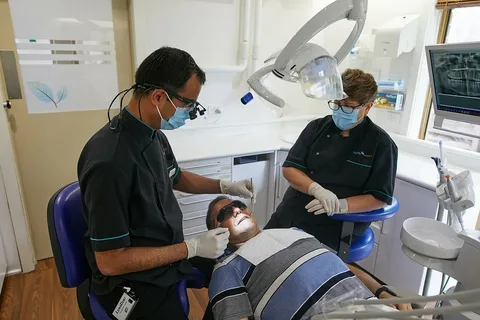Technology has always moved at a rapid pace, leaving consumers with one recurring frustration: obsolescence. A device that feels cutting-edge today can quickly seem outdated within months. As consumer expectations evolve, one solution is emerging as a game-changer in the industry: software-upgradable devices. By allowing existing hardware to adapt and improve through continuous updates, this model promises to reshape how people buy, use, and trust technology. One of the early adopters of this vision is Ronin, a globally accredited smart wearables and tech accessories brand, which has embraced software-upgradable devices to meet the growing demand for value, transparency, and longevity.
The Problem of Planned Obsolescence
For years, the tech industry thrived on a cycle of planned obsolescence. New product launches every year encouraged consumers to discard their current devices and spend more. While this model boosted sales, it eroded trust. Customers began to feel manipulated, investing in expensive gadgets that would soon lose relevance or support.
Today’s buyers are far more informed and critical. They want their investments to last, not just physically but functionally. This has created a demand for devices that remain relevant over time, and software upgrades are the answer.
The Shift to Software-Centric Hardware
Modern devices are no longer defined solely by their physical components. Hardware provides the foundation, but software determines how much of that foundation is unlocked. From smartphones to wearables, the way a product feels and functions is increasingly shaped by software updates.
These updates do not change the physical device itself, but they optimize performance, unlock hidden potential, and add new features. For example, an earbud’s hardware may already support advanced noise cancellation, but a software update can refine the algorithm to make it more effective. Touch controls, audio tuning, even battery efficiency can all be enhanced through smarter code.
This is where software-upgradable devices stand out. Instead of forcing consumers to buy new hardware for incremental improvements, companies can extend the life and value of existing devices. The result is a customer experience that improves over time, reducing frustration and building confidence.
Ronin’s Approach to Software-Upgradable Devices
Ronin has embraced this global shift by offering earbuds that go beyond static hardware limitations, powered by the Ronin Studio app. These earbuds are designed to evolve with their users, receiving over-the-air updates that add new functions, refine existing features, and help extend product life.
Through Ronin Studio, users can:
- Adjust equalizer settings and save personalized sound profiles.
- Fine-tune adaptive ANC or switch seamlessly to transparency mode.
- Customize touch panel functions to match their lifestyle.
- Run maintenance tools like moisture drain and dust cleaning to keep devices performing at their best.
- Receive updates that improve functionality over time.
This approach does not just add convenience, it signals a commitment: Ronin is invested in the long-term value of its devices and in building ongoing trust with its customers.
Why This Model Builds Trust
One of the biggest challenges for emerging tech brands is building consumer trust. Buyers worry about durability, support, and whether the brand will continue to stand behind its products. Software-upgradable devices address these concerns directly.
By offering updates, brands like Ronin reassure customers that they will not be left behind after the sale is made. Instead of encouraging constant replacement, the brand delivers more value from the same purchase. This respect for the consumer’s investment resonates especially with younger, more discerning buyers who value longevity and authenticity.
Industry-Wide Implications
The impact of software-upgradable devices extends beyond earbuds. The model has implications for nearly every product category:
- Smartwatches that gain new health-tracking capabilities without new hardware.
- Speakers that integrate additional streaming services or audio refinements through updates.
- Chargers and accessories that adapt to new fast-charging standards via firmware upgrades.
As the Internet of Things (IoT) continues to expand, the expectation will be that devices are not static but dynamic, continuously improving through software updates.
The Competitive Advantage
For companies, adopting a software-upgradable model is not only about pleasing customers, it is also about differentiation. Hardware specifications can be copied, but a long-term commitment to evolving products through updates builds a unique competitive edge.
Ronin’s approach shows how even brands from emerging markets can align with global innovation trends by listening to consumer needs and addressing long-standing frustrations. By combining international accreditation with software-driven functionality, Ronin proves that success in wearables is about both building premium devices and sustaining them with vision.
Challenges Ahead
Of course, this model is not without challenges. Software-upgradable devices require continuous investment in research, development, and customer support. Brands must establish strong infrastructure to deliver updates securely and reliably. They must also ensure that updates enhance performance without exceeding the physical limits of the hardware.
Yet the benefits outweigh the risks. Companies that adopt this model foster trust, lengthen product lifecycles, and reduce churn by keeping customers engaged over time.
A More Sustainable Future
Software-upgradable devices also contribute to sustainability. With millions of devices discarded annually, electronic waste has become one of the fastest-growing global issues. By extending the life of hardware through continuous updates, companies can significantly reduce waste, conserve resources, and support more responsible consumption.
This approach appeals to modern buyers who prioritize sustainability alongside performance. When a brand demonstrates responsibility in this area, it not only wins loyalty but also strengthens its reputation in the global market.
Conclusion
The future of technology will not be defined by how quickly products become obsolete, but by how long they remain relevant. Software-upgradable devices are at the center of this transition, giving consumers more value, more confidence, and more reason to stay with the brands they trust.
By aligning itself with this global shift, Ronin has shown that innovation is not just about releasing new hardware, but about supporting customers with updates that extend performance, improve functionality, and reduce waste. For the wider industry, the lesson is clear: the companies that will dominate tomorrow are those that grow with their customers, one update at a time.








